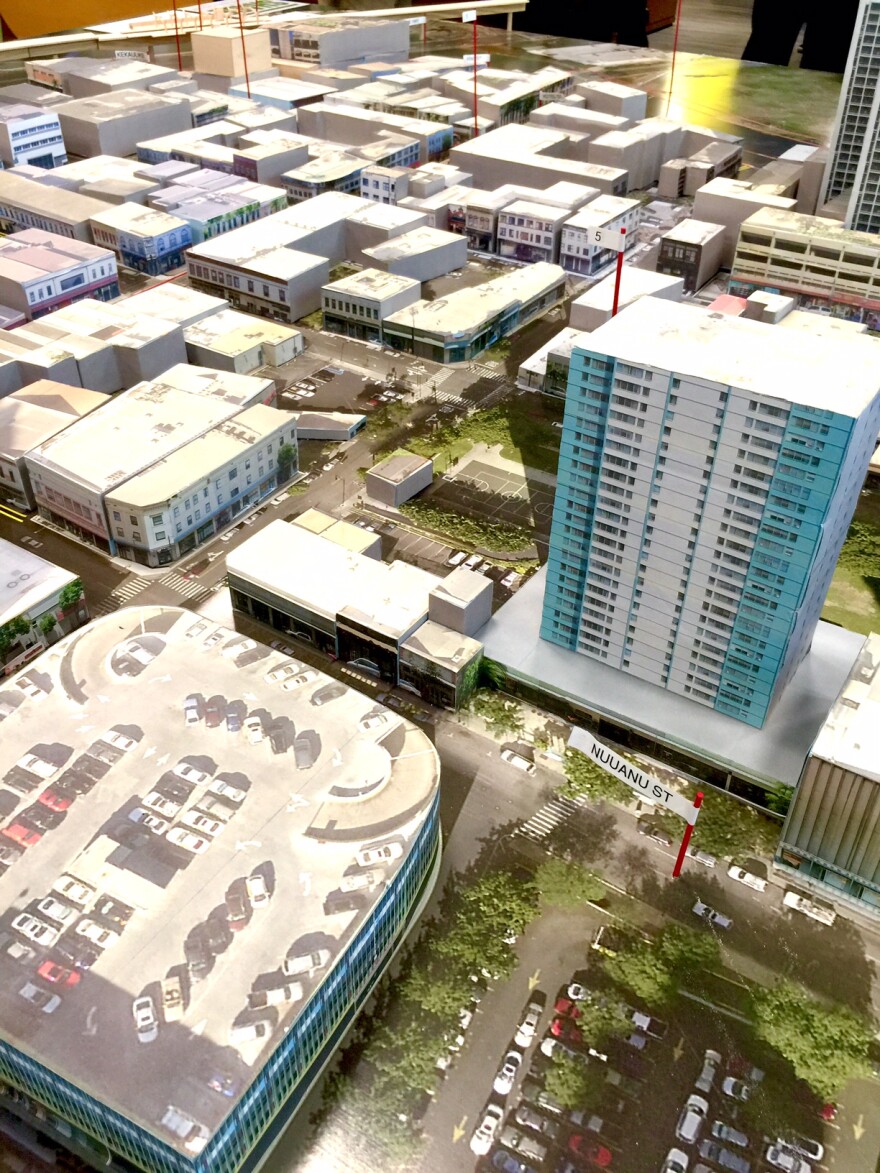
Every now and then we in Honolulu like to think of ourselves as a world class city. Or at least, we look at the pantheon of world class cities, New York, Tokyo, Shanghai, Paris, etc. and imagine growing up to be one. Assessing our current built environment, one could wonder if we really are on the right track.
See the work of last summer's Chinatown Urban Acupuncture Project at Honolulu Hale from February 23-March 10, 2016. On Tuesday, March 8, 4-5:30pm, there will be a special reception with the SHADE interns and principals on hand to explain the details of what they learned and what some of their quickest fixes might be.
“We do live in a wonderful place, the sky, the mountains, the ocean, it’s unparalleled. But then when you look at what we’ve been making, our built environment especially, I think there’s a discrepancy.”
Architect, educator, Dean Sakamoto, points out that many buildings that go up in Honolulu do very little to make this a more beautiful or pleasant place to live. Often the reverse.
Sakamoto says that’s why a group of professional architects and planners have gotten together to encourage participation by the public in planning for our shared environment.
That’s the thinking behind SHADE, which stands for Sustainable Humanitarian Architecture and Design for the Earth. It’s a public interest architecture and planning group, and their first project last summer was the Chinatown Urban Acupuncture Project. This project pulled a lot of partners together: Enterprise Honolulu, State of Hawaii and the City and County of Honolulu area leadership, Friends of Chinatown, the Department of Planning and Permitting, professional architects, graduate interns, and area residents, businesses and stakeholders. If you're looking for legislative initiatives, State Senator Suzanne Chun Oakland and Honolulu City Councilmember Carol Fukunaga are supporters of urban design. They're looking for ways to implement ideas from the Chinatown Urban Acupuncture Project..

“Urban acupuncture is about making small precise moves to improve the greater whole. So a pinprick can make a big difference, ” according to Sakamoto. The term “urban acupuncture" was coined by a Finnish architect, referring to tactics by which pressure points in a community are determined and treated to achieve a healthier whole. In the case of Honolulu’s Chinatown, Sakamoto says SHADE interns looked for low hanging fruit ideas, ideas that could be easily implemented. They came up with ideas for using the defunct pillars now clustered along Nu‘uanu Stream near Kukui Street as retail kiosks. The kiosks could be made out of pallets. They also developed an idea for portable composting toilets with their own solar paneled roofs. That, would certainly be welcome.
Sakamoto says context is critical for appropriate urban planning, so last summer, architecture interns set about documenting existing resources and uses, they mapped parking, businesses, street life, and knocked on doors in Chinatown to find out who lives and works there. Intern Lulu Fung was able to help with translating, and found that many of the landowners were elderly and did not speak English.
Ever wondered what’s on the second floors of all those shops? Intern Teresa Gabaylo found out many of them are used for storage, but many are residences. In the over 100 interviews the interns did, they found that most who work in Chinatown live within 5-10 minutes walking or biking distance.
Erin Chow says one surprising finding was the number of pleasant shady courtyards behind the ragged storefronts. Sakamoto says in the old days, those buildings were shops and boarding houses for laborers and recent immigrants, with communal washing and cooking facilities in the center courtyards.
Intern Justin Wong points out that Chinatown is rife with over 100 landowners, which makes consensus on a path for the future a bit more complicated.

Currently the planned rail station at Kekaulike and Nimitz is largely suspended 300 feet over the highway. Sakamoto says, it will bring people to the area, in fact, right to where Chinatown could and should connect to the water. He envisions people being able to exit the station on the mauka side to head up into Chinatown or on the makai side where they could be greeted by a waterfront esplanade.
Expanding on that idea, architect Jason Di Marco says another SHADE group concept is to enhance a mauka to makai connection along Nu‘uanu stream, from the waterfront to Foster Gardens. That would establish a scenic route where people could walk their pets and interact in all the ways that make urban life pleasurable.
Dean Sakamoto says the waterfront is a tremendous asset whose development could be planned for the community with urban design. Urban design is the discipline of making the elements of a place harmonious, habitable. The alternative is to wait and see what developers want to do.
O‘ahu has land regulations, we’ve got building regulations, but the bad news, Sakamoto says, is that there is no overall government entity charged with urban design. Ultimately, he says it falls to us, the citizens, to understand where we live and demand what we think is best for our communities.
SHADE hopes to model how community urban design could work. Ahead, this summer, another project is in store for the Waipahu area. They’re also beginning to work with the County of Kaua‘i on planning for L?hu‘e’s urban core. What?!? You say? Yes, planning is how their urban core, which is coming, could look good.





